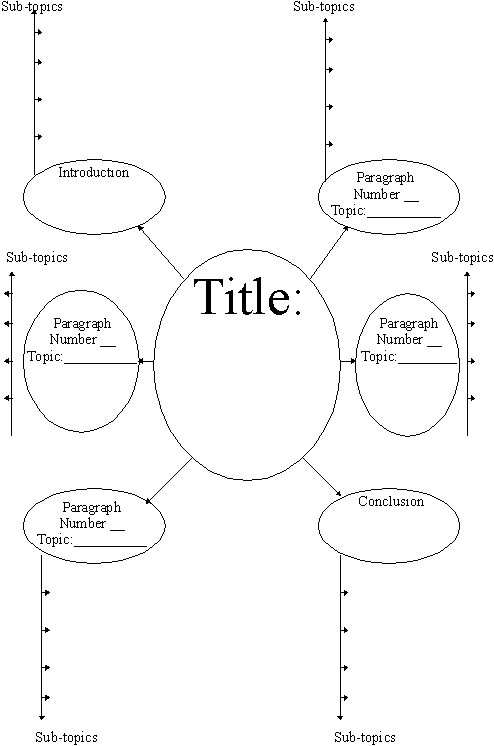Mindmaps
There is a picture of a mind-map for you to print out and fill in at the bottom of this page.
There is an Internet mind-map maker here.
Mind-maps are better than planning in a linear way. A linear (in a line) way means that, for example, you:
- Write the introduction.
- Write the first paragraph's topic sentence.
- Write the sub-topics of the first paragraph.
- Do steps 2 and 3 with the other paragraphs.
- Write the conclusion.
This is not a good way because you are deciding on the order before writing. Therefore, if you change your mind you have to re-write your text. If you use a mind-map you decide on the order last.
If you like using linear lists, try this Internet program for re-ordering lists.
- Fill in the 'Title' circle.
- Fill in the 'Topic' section in the circles, but don't fill in the paragraph number yet.
- Fill in the 'Sub-topics' for each paragraph. You can use journalistic questioning or brainstorming to think of ideas.
- Number the sub-topics in order of importance, time, cost, feasibility, or other criteria.
- Decide which topic is most important, and write 'Paragraph Number 1' in the circle.
- Put the other topics in order and number their 'Paragraph Numbers' in the circles.
- Write the Topics as sub-topics of the 'Introduction'
- Write the question, research question, or statement from the 'Title' as the last sub-topic of the 'Introduction'
- Write a conclusion that answers this question or comments on this statement. The sub-topics of the conclusion are a brief summary of the reasons for the conclusion.
- Use the mind-map as the plan to organise your writing.
- There is an mind-map maker on the Internet here.
|
Last updated on: Friday, March 23, 2012


